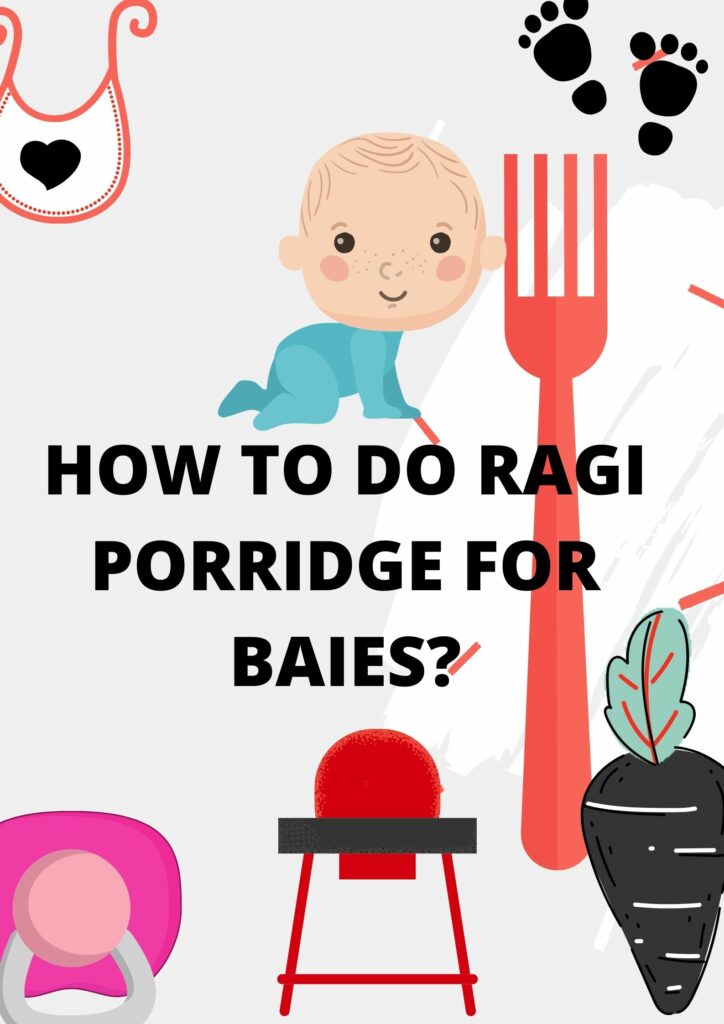Ragi porridge for Babies, how to prepare ragi porridge for infants and toddlers – When ingested consistently, ragi porridge, ragi malt, or ragi kanji is healthy and gives a good dosage of nutrients. It strengthens the bones and teeth and generally enhances health. To learn more about this miracle grain, check out this in-depth post on ragi or finger millet. Ragi porridge, also known as kanji, java, sari, or malt, is prepared somewhat differently in different places.
Breastfeeding exclusively throughout the first six months of a baby’s life is necessary for optimal weight gain, health, and immunity. You can also refer national website and guidelines to start baby solids after 6 months. After six months, you may add ragi.
Here are some suggestions for introducing ragi to infants.
Consult your paediatrician first to determine whether you may give ragi to your infant. Ragi is recommended as a first food by the majority of doctors in South India since it is gluten-free and is a less allergic grain than oats.
However, care must be taken not to contaminate the ragi flour with gluten-containing flours such as wheat or barley. Such contamination may cause allergic reactions, rashes, colic, diarrhoea, or an upset stomach in infants.
To minimise such dangers, handmade flour is preferable. If sprouted ragi flour cannot be obtained, soaking the grains overnight and then drying, roasting, and powdering them is an acceptable alternative.
Adhere to the three-day waiting period. After introducing ragi, refrain from introducing any other new meal for the next three to four days. This enables a thorough analysis of whether the item is acceptable for your infant or not.
If you notice any rashes, indigestion, persistent hiccups, restlessness, colic, or diarrhoea, immediately discontinue the use of the cereal and seek medical attention.
Do not be afraid; most newborns tolerate ragi nicely with correct flour preparation and porridge preparation.
For infants under the age of eight months, porridge must be cooked either with extracted ragi milk or with handmade flour sieved through a muslin cloth. Otherwise, the infant may have difficulty swallowing the porridge.
Doctors typically advocate boiling ragi in milk or water and then adding formula milk to thin it out. However, my doctor advised me to offer ragi alone, without milk or curd.
Since milk inhibits the absorption of iron in ragi. Additionally, to aid in iron absorption, fruits high in vitamin C such as apple or pear can be added to ragi (but without milk).
How to prepare ragi porridge for babies?
Consult your physician before attempting this. — after six months
Direction To Do:
- Soak ragi in water for at least 8 to 10 hours. They can be chilled while soaking, or the water should be changed several times to prevent odour.
- Drain and mix them with a little water in a blender jar. Water can be added as needed.
- Cover a colander with a towel and place a container beneath it to collect milk.
- Squeeze the mixed mixture into the cloth to remove the milk. You may then repeat the mixing and filtering process.
- Cook this milk over low heat until it reaches the desired consistency. If using milk, let it cool fully before using. In a cup, combine the formula powder and a little water to produce the milk and add it to the ragi. Stir well.
- Always serve at room temperature. Warm meals are easier on the stomach and more easily digested.

